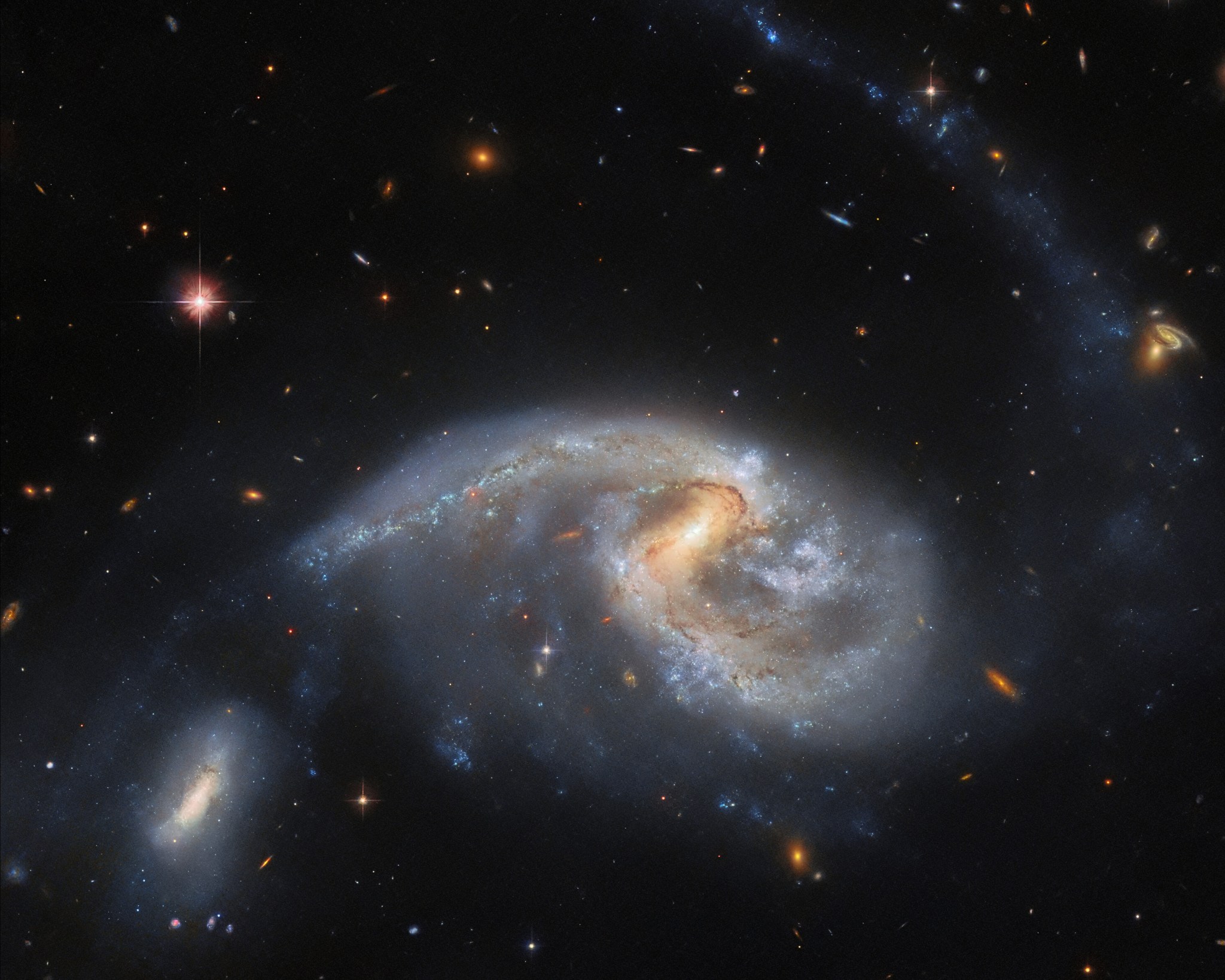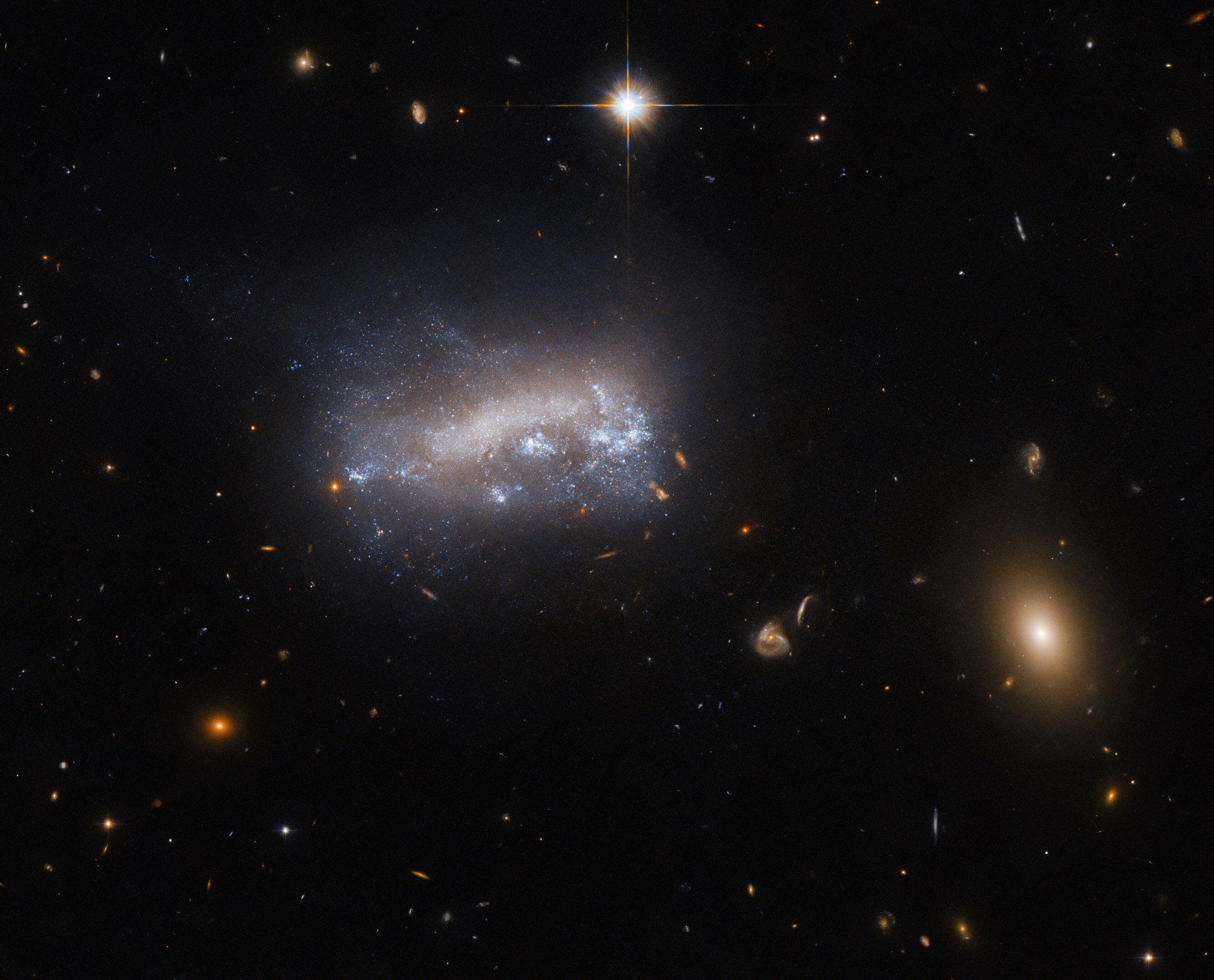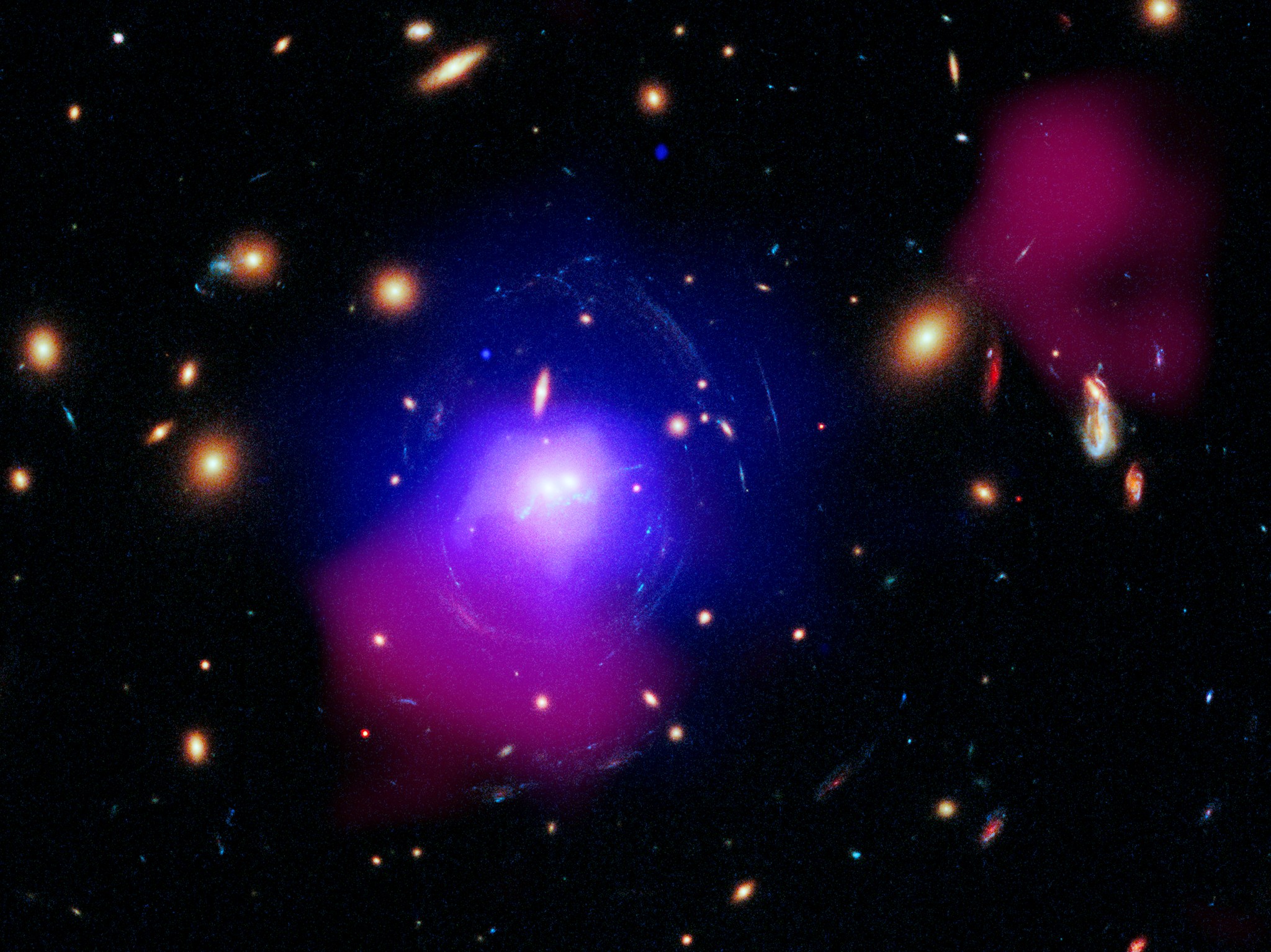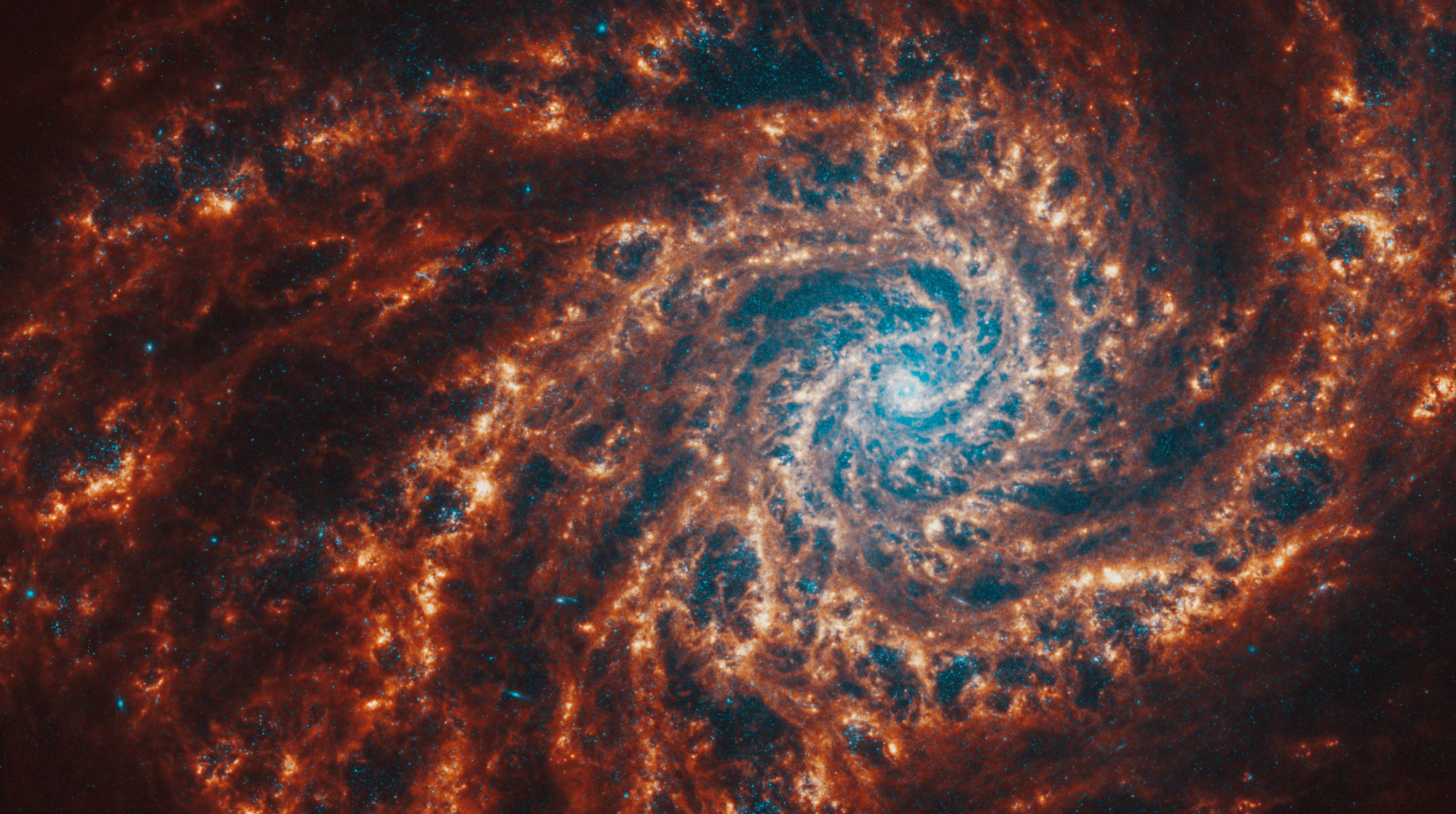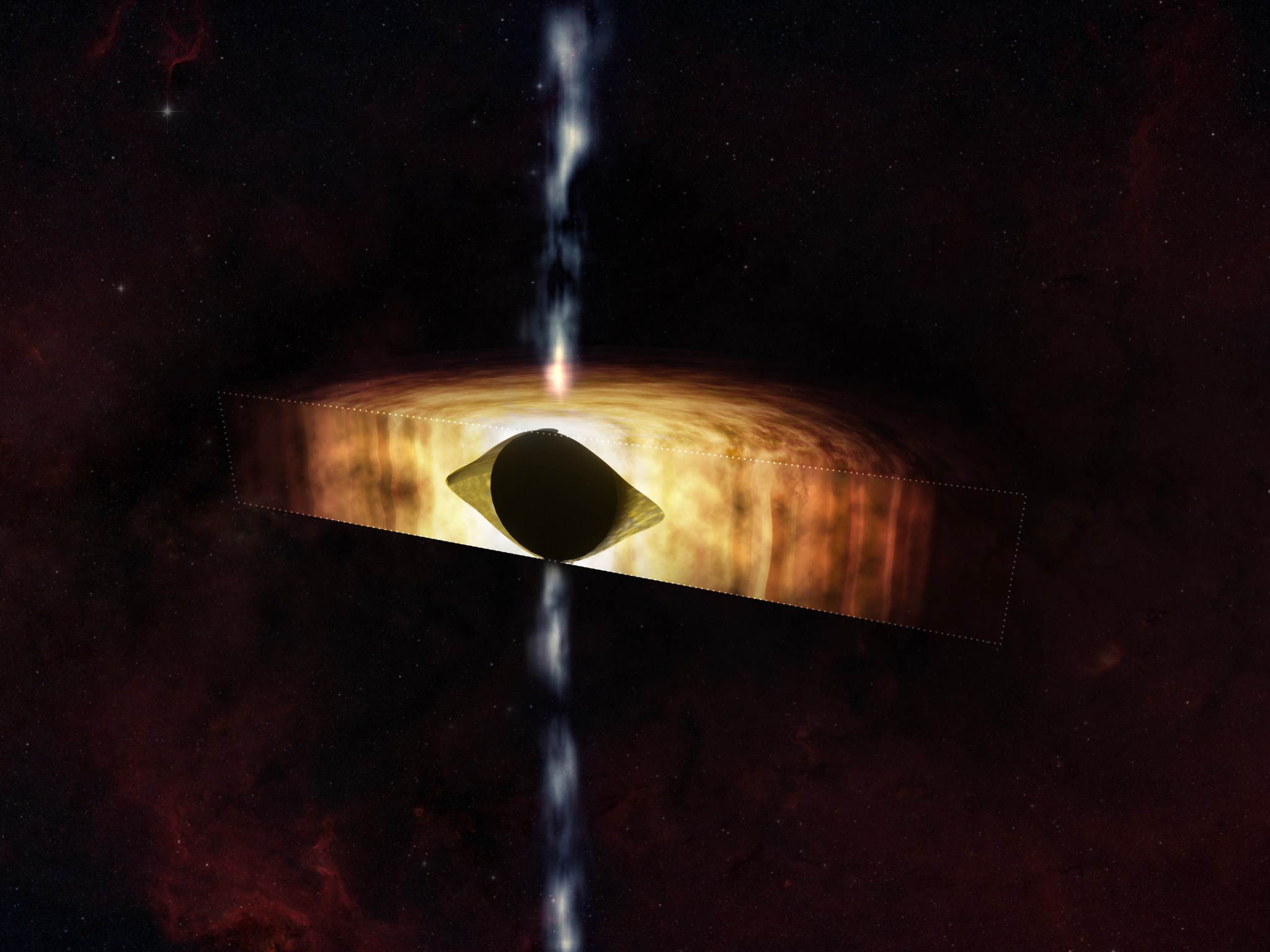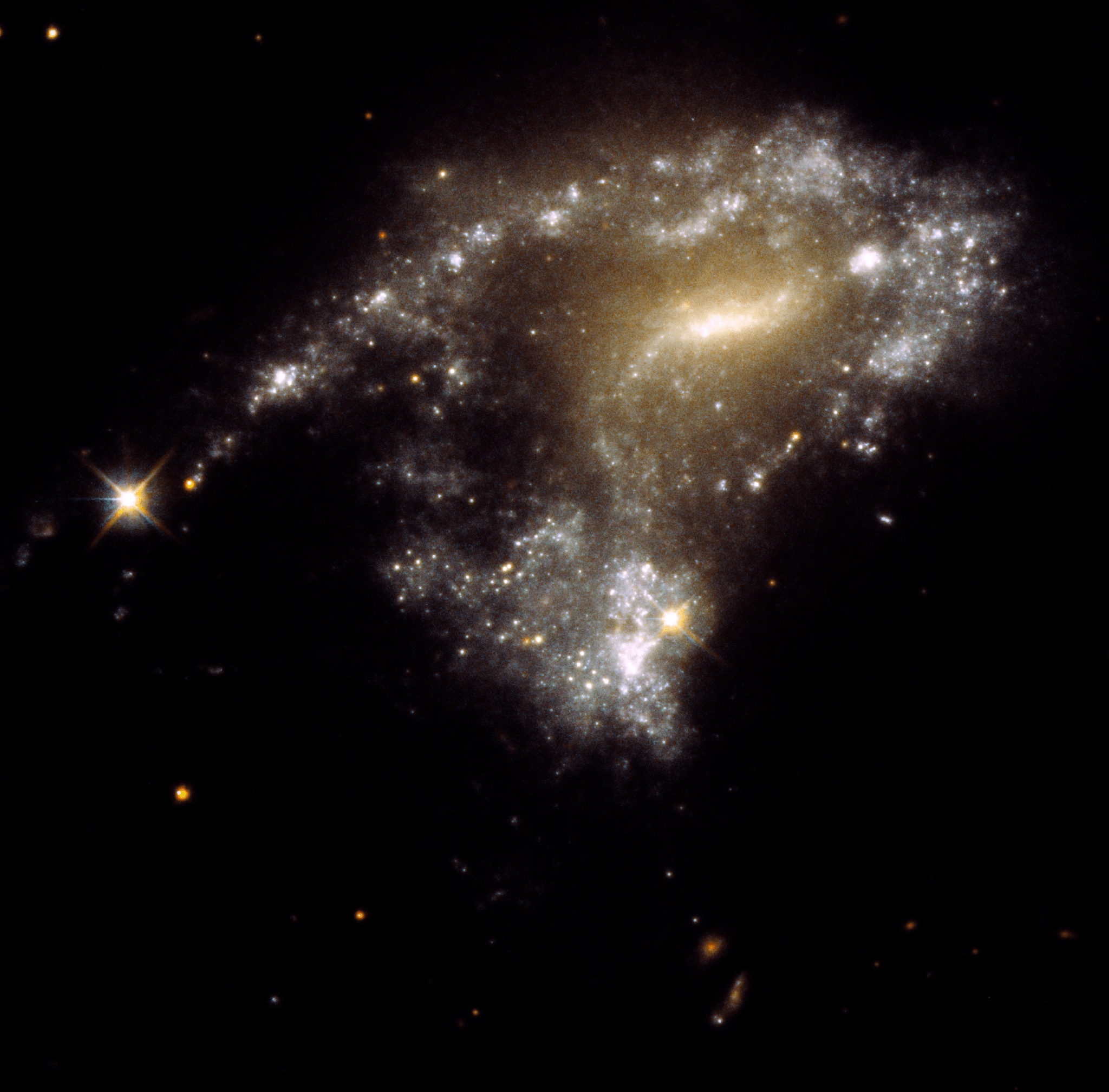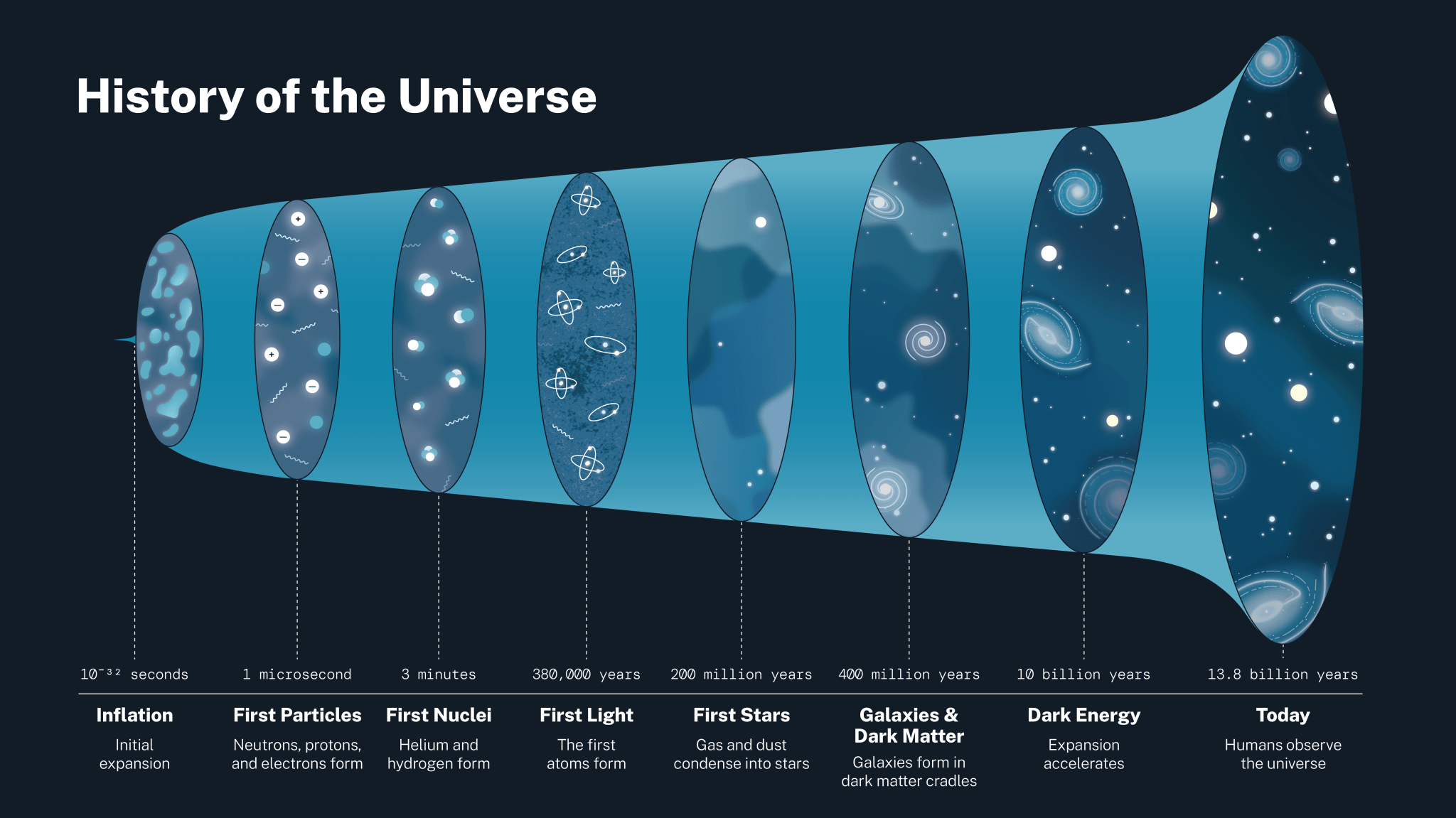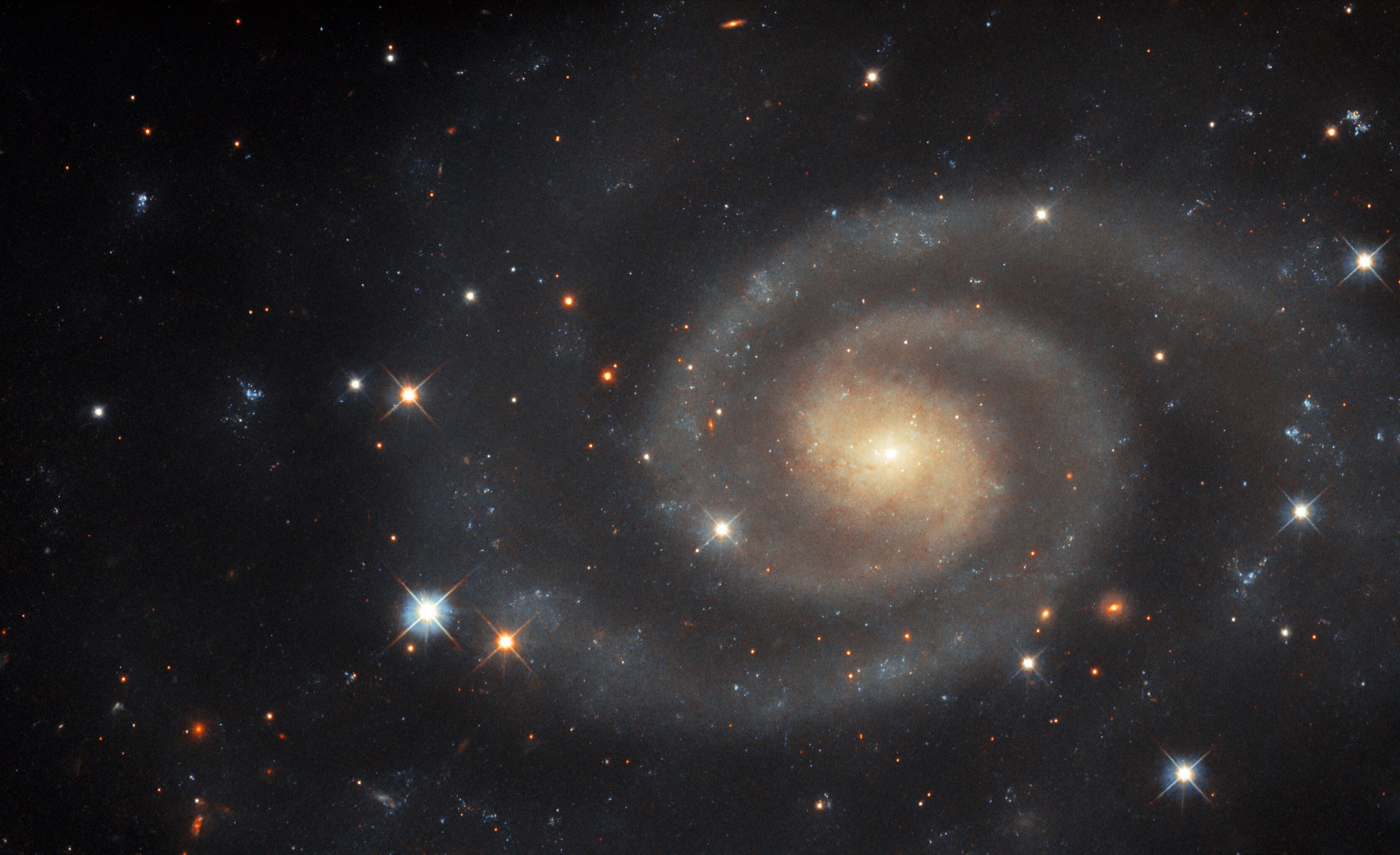2 min read Hubble Peers at Pair of Closely Interacting Galaxies This NASA/ESA Hubble Space Telescope image features Arp 72. ESA/Hubble & NASA, L. Galbany, J. Dalcanton, Dark Energy Survey/DOE/FNAL/DECam/CTIO/NOIRLab/NSF/AURA This image from the NASA/ESA Hubble Space Telescope features Arp 72, a very selective galaxy group that only includes two galaxies interacting due to gravity: NGC 5996 (the large spiral galaxy) and NGC 5994 (its smaller companion, in the lower left of the image). Both galaxies lie approximately 160 million light-years from Earth, and their cores are separated from each…
Read MoreTag: Galaxies
Hubble Views a Galaxy Under Pressure
2 min read Hubble Views a Galaxy Under Pressure This NASA/ESA Hubble Space Telescope image shows dwarf galaxy, LEDA 42160. ESA/Hubble & NASA, M. Sun This NASA/ESA Hubble Space Telescope image shows LEDA 42160, a galaxy about 52 million light-years from Earth in the constellation Virgo. The dwarf galaxy is one of many forcing its way through the comparatively dense gas in the massive Virgo cluster of galaxies. The pressure exerted by this intergalactic gas, known as ram pressure, has dramatic effects on star formation in LEDA 42160. The gas…
Read MoreStellar Beads on a String
Galaxy cluster SDSS J1531+3414 X-ray: NASA/CXC/SAO/O. Omoruyi et al.; Optical: NASA/ESA/STScI/G. Tremblay et al.; Radio: ASTRON/LOFAR; Image Processing: NASA/CXC/SAO/N. Wolk Astronomers have discovered one of the most powerful eruptions from a black hole ever recorded in the system known as SDSS J1531+3414 (SDSS J1531 for short). As explained in our press release, this mega-explosion billions of years ago may help explain the formation of a striking pattern of star clusters around two massive galaxies, resembling “beads on a string.” SDSS J1531 is a massive galaxy cluster containing hundreds of individual galaxies and huge reservoirs of hot gas and dark…
Read MoreSpiral Galaxy NGC 4254’s Dazzling Swirls
It’s oh-so-easy to be mesmerized by this spiral galaxy. Follow its clearly defined arms, which are brimming with stars, to its center, where there may be old star clusters and – sometimes – active supermassive black holes. NASA’s James Webb Space Telescope delivered highly detailed scenes of this and other nearby spiral galaxies in a combination of near- and mid-infrared light. NASA, ESA, CSA, STScI, Janice Lee (STScI), Thomas Williams (Oxford), and the PHANGS team NGC 4254, a spiral galaxy, is resplendent in orange and blue in this Jan. 29,…
Read MoreHubble Spots a Galaxy Shrouded by Stars
2 min read Hubble Spots a Galaxy Shrouded by Stars This Hubble image shows irregular galaxy, ESO 245-5, located some of 15 million light-years from Earth. ESA/Hubble & NASA, M. Messa This NASA/ESA Hubble Space Telescope image shows a densely packed field of stars laid upon a background of dust, gas, and light from more distant celestial objects. There are so many stars in this image’s field of view that it may be a little tricky to discern that you are in fact looking at a galaxy. Known as ESO…
Read MoreTelescopes Show the Milky Way’s Black Hole is Ready for a Kick
NASA/CXC/M.Weiss This artist’s illustration depicts the findings of a new study about the supermassive black hole at the center of our galaxy called Sagittarius A* (abbreviated as Sgr A*). As reported in our latest press release, this result found that Sgr A* is spinning so quickly that it is warping spacetime — that is, time and the three dimensions of space — so that it can look more like a football. These results were made with NASA’s Chandra X-ray Observatory and the NSF’s Karl G. Jansky Very Large Array (VLA). A team of researchers applied a new…
Read MoreNASA’s Hubble Traces ‘String of Pearls’ Star Clusters in Galaxy Collisions
3 min read NASA’s Hubble Traces ‘String of Pearls’ Star Clusters in Galaxy Collisions Galaxy AM 1054-325 has been distorted into an S-shape from a normal pancake-like spiral shape by the gravitational pull of a neighboring galaxy, seen in this NASA Hubble Space Telescope image. A consequence of this is that newborn clusters of stars form along a stretched-out tidal tail for thousands of light-years, resembling a string of pearls. They form when knots of gas gravitationally collapse to create about 1 million newborn stars per cluster. NASA, ESA, STScI,…
Read MoreWhat is Dark Energy? Inside our accelerating, expanding Universe
11 min read What is Dark Energy? Inside our accelerating, expanding Universe Some 13.8 billion years ago, the universe began with a rapid expansion we call the big bang. After this initial expansion, which lasted a fraction of a second, gravity started to slow the universe down. But the cosmos wouldn’t stay this way. Nine billion years after the universe began, its expansion started to speed up, driven by an unknown force that scientists have named dark energy. But what exactly is dark energy? The short answer is: We don’t…
Read MoreHubble Views a Dim but Distinct Galaxy
2 min read Hubble Views a Dim but Distinct Galaxy Both visible and ultraviolet wavelengths of light comprise this Hubble Space Telescope image of the spiral galaxy UGC 11105. ESA/Hubble & NASA, R. J. Foley (UC Santa Cruz) This image of the softly luminous spiral galaxy UGC 11105 is from the NASA/ESA Hubble Space Telescope. It lies about 110 million light-years from Earth in the constellation Hercules. Astronomers have different ways of quantifying how bright celestial objects are. Apparent magnitude is one of those methods. It describes how bright an…
Read MoreHow do galaxies grow while ensnared in the universe’s cosmic web?
Just like being trapped within a spider’s web drastically changes a fly’s life, galaxies ensnared in the vast cosmic web are dramatically and irreversibly altered. Now, scientists from the University of Kansas are aiming to better understand the mechanisms at play in shaping clusters of galaxies as they travel through a cosmic web of different environments. KU professor of physics and astronomy Gregory Rudnick is leading the effort, which involves recreating the cosmic web in a computer simulation, then studying gas content and star-formation properties of galaxies as they move…
Read More